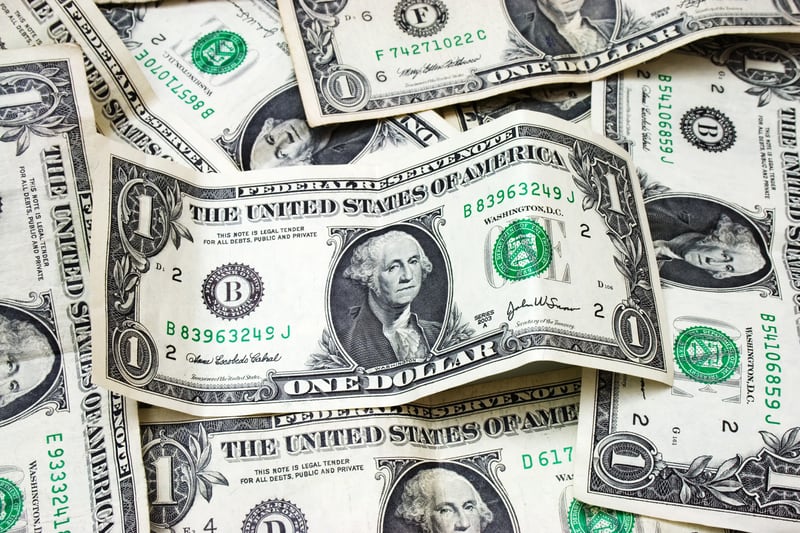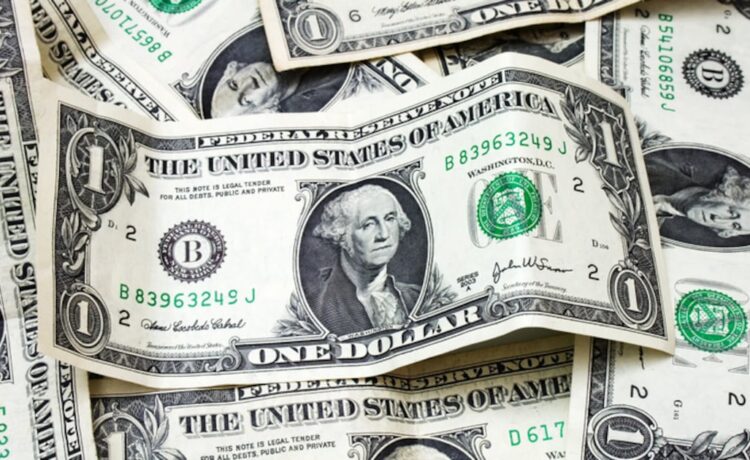
Perhaps the biggest risk of President Donald Trump’s ongoing trade war is that he could permanently reduce the value of the dollar.
Currently, the US dollar is the world’s reserve currency — the one used in a majority of the world’s international transactions. To see how this works, consider what happens when a Mexican farmer wants to sell pork to a South Korean restaurant chain. The South Korean company probably doesn’t have a ton of pesos in the bank, and the Mexican farmer doesn’t have much use for the South Korean won.
The dollar is the solution: The South Korean company exchanges won for dollars, buys the pork with those dollars, and then the Mexican farmer exchanges his hard-won greenbacks for pesos.
The dollar’s reserve status keeps demand for America’s currency and debt artificially high, and thus, our nation’s borrowing and consumer costs unusually low.
But Trump’s erratic and belligerent trade agenda has shaken global investors’ confidence in both America’s economic and political stability. Among bankers and foreign governments, talk of “de-dollarization” has spiked.
The dollar’s dominant role in international finance is unlikely to end any time soon. But Trump’s policies have increased the odds of the currency’s future displacement, while driving down its current value.
Conventional economic wisdom held that Trump’s tariffs would make the dollar more valuable, because the dollar’s strength is determined by how much foreign currency it can buy. It therefore gains value as other major currencies lose value.
What’s more, Trump’s trade agenda was sure to increase economic uncertainty. And in recent decades, whenever global investors got jittery, they tended to buy US Treasury bonds, widely considered the world’s safest asset. These periodic surges in demand for US Treasuries have always driven up the value of the dollar.
But this is not what happened. Rather, to the surprise of Trump’s supporters and critics alike, the US Dollar Index has lost about 9 percent of its value since Trump took office.
Now, the dollar’s status as a global reserve currency isn’t an unmitigated boon to the US. Since that status inflates the dollar’s international value, it renders US exports more expensive to foreign consumers, reducing the global competitiveness of American firms.
But the dollar’s dominance is likely beneficial on net to the United States. At the very least, its displacement as global reserve currency would impose significant economic costs on American households.
The end of dollar dominance would force the US government to pay much higher interest rates. That would exacerbate the burden of America’s debt, and make it harder for our government to avoid broad tax hikes or entitlement cuts (or both) in the coming decades.
Meanwhile, a permanently weaker dollar would reduce Americans’ living standards. Our nation’s trade deficit is often framed as a great imposition. But to an extent, it means that we are effectively trading something we can effortlessly produce — our currency and debt — for goods and services that other human beings must labor to generate. Since the dollar is in such high global demand, we have, in a sense, been able to live off exporting our own money.
Were dollar dominance to end, Americans would see their currency devalued — and thus, the real worth of their incomes and savings decline. It is possible that America could eventually develop a new, similarly prosperous economic model. But the process of economic adjustment would be painful.
The good news for Americans is there’s no real viable alternative to the dollar.
The euro isn’t an attractive option because the EU doesn’t have a centralized treasury or debt-issuing authority, or a unified eurobond market. Instead, Europe offers only fragmented markets for national debt. This means that none of its bond markets boast anywhere near the scale and liquidity of the market for US Treasuries.
China, meanwhile, puts heavy restrictions on the movement of money across its borders. This means that the yuan cannot be easily converted into foreign currencies, and is therefore unsuited to global reserve status.
All of this said, discontent with the dollar system was growing even before Trump’s second inauguration. Were the European Union to ever move to greater fiscal union or China to embrace greater financial openness and a modicum of political reform, it’s conceivable that the world would readily transition to an international monetary system with multiple dominant currencies, in which the dollar’s role would be greatly diminished.
The short term concern, however, is that the dollar appears poised to grow marginally weaker in the coming months and years. And with Trump’s tariffs already reducing Americans’ purchasing power — by driving up the cost of imports — the dollar’s depreciation threatens to hit Americans’ finances especially hard.
His supporters insist that this “short-term pain” is necessary to bring “long-term gain.” But that is false. Trump’s trade agenda will make Americans poorer both now and in the future. The only question is how extensive and reversible the damage will prove to be.
Eric Levitz is a senior correspondent at Vox, where this article originally appeared. He covers a wide-range of political and policy issues, with a special focus on questions that internally fracture the American left and right.
• • •
The views expressed here are the writer’s and are not necessarily endorsed by the Anchorage Daily News, which welcomes a broad range of viewpoints. To submit a piece for consideration, email commentary(at)adn.com. Send submissions shorter than 200 words to [email protected] or click here to submit via any web browser. Read our full guidelines for letters and commentaries here.





